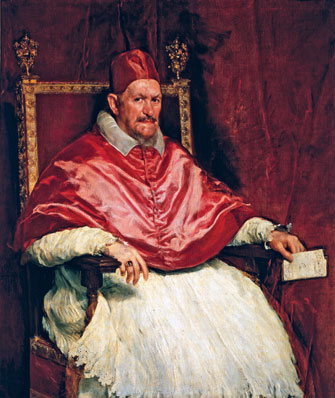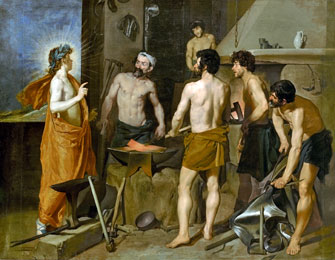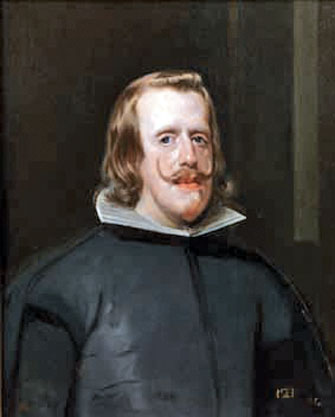A Partial Look at
The Painter’s Painter

“The Toilet of Venus” (c. 1647-51). © The National Gallery
Diego Velázquez (1599-1660) is justly considered one of the world’s all-time great painters – Manet called him “the painter’s painter” and “the greatest artist there has ever been” – but if you have seen such masterpieces as “Las Meninas” at the Museo Nacional del Prado in Madrid or the stunning portrait of Juan de Pareja (1650), Velázquez’s studio assistant and slave (eventually freed by the painter) at the Metropolitan Museum in New York, you might be surprised and disappointed to find them missing from the major exhibition of his work at Paris’s Grand Palais.
Those museums were understandably reluctant to lend some of the stars of their collections, but luckily, there are many compensations in the exhibition, which takes the tack of setting the painter in the context of his times and artistic influences.
Velázquez is first compared with his Sevillan master Francisco Pacheco (1564-1644), a humanist who believed firmly in the importance and nobility of his profession, which had until then been considered more akin to a skilled trade like carpentry. Pacheco was soon surpassed in skill by his protégé, who married his daughter, and the older man had the good grace to admit his son-in-law’s talent publicly.
That the acolyte, who had a simplifying eye that better suits our modern sensibilities, outdid his mentor is evident in a number of works, perhaps most obviously in “The Immaculate Conception” (1618-19), compared here with Pacheco’s “The Immaculate Conception with Miguel Cid” (1619) and a number of works by other contemporary artists with similar themes.
Also painted by Velázquez in his apprentice days in Seville, a few Caravagesque bodegones (genre scenes) of a tavern, a kitchen maid,

“La Mulata” (1617-18). © The Art Institute, Chicago
three musicians, etc., show how astoundingly talented he was when only 17 or 18 years old. He left the bodegones behind, however, when he went to Madrid in 1622 and eventually achieved his dream of becoming a court painter for Philip IV.
Two trips to Italy early and late in his career left their marks on his work, visible most notably in “The Toilet of Venus” (c. 1647-51; pictured at the top of the page). The nude was a rarity in Spanish painting, and this one may have been influenced by paintings of Venus by Giorgione or Titian. The twisted pose echoes that of the “Borghese Hermaphrodite,” a Roman copy of the original Greek sculpture (on show in the exhibition), which Velázquez saw on his second trip to Italy and had copied in bronze.
Other outstanding pieces in the exhibition include the Met’s “Portrait of a Man” (1634-35, a presumed self-portrait), previously thought to be by his workshop but after cleaning reclassified as a work of the master himself; the

“Portrait du Pape Innocent X” (1650). © Amministrazione Doria Pamphilj srl
intense 1650 portrait of Pope Innocent X, with his piercing eye and tense pose; and “Apollo in the Forge of Vulcan” (c. 1630), which vividly shows the shocked reactions of Vulcan and his

“Apollo in the Forge of Vulcan” (c. 1630). © Madrid, Museo Nacional del Prado
assistants when they hear the news from the sun god that Vulcan’s wife Venus has been cheating on him with Mars, the god of war.
Velázquez was a brilliant portraitist, and while some complain that his court paintings are stiff compared with works from his Seville period, it

“Portrait of Philip IV (c. 1654). © Madrid, Museo Nacional del Prado
seems to me that even within the constraints of official artworks they breathe life into their subjects. It is rather touching to see Philip IV age from a brash young man to a monarch worn down by the cares of his reign in Velázquez’s portraits of the king in the Prado.
If there were any doubt about the genius of Velázquez’s painting, one need only compare them with the decidedly less masterly works of his successor and son-in-law, Juan Bautista Martinez del Mazo, presented in the last two rooms of the exhibition. One gets the impression that they are there to pad out the show.
In spite of its lacunae, this exhibition is still a must-see. Then, once you have seen it, take a trip to Madrid to round out the picture.
Galeries Nationales du Grand Palais: 3, avenue du Général Eisenhower, 75008 Paris. Métro: Champs-Elysées Clemenceau. Tel.: 01 44 13 17 17. Open Wednesday-Saturday, 10am-10pm; Sunday-Monday, 10am-8pm. Closed Tuesday. Admission: €13. Through July 13, 2015. www.grandpalais.fr
Reader reaction: Click here to respond to this article (your response may be published on this page and is subject to editing).
Please support Paris Update by ordering books from Paris Update’s Amazon store at no extra cost. Click on your preferred Amazon location: U.K., France, U.S.
More reviews of Paris art shows.
© 2015 Paris Update
Favorite